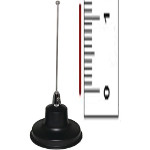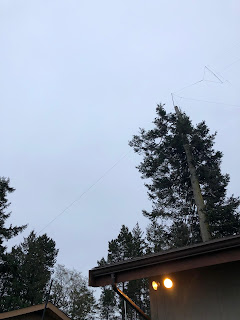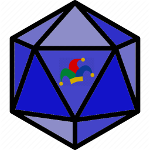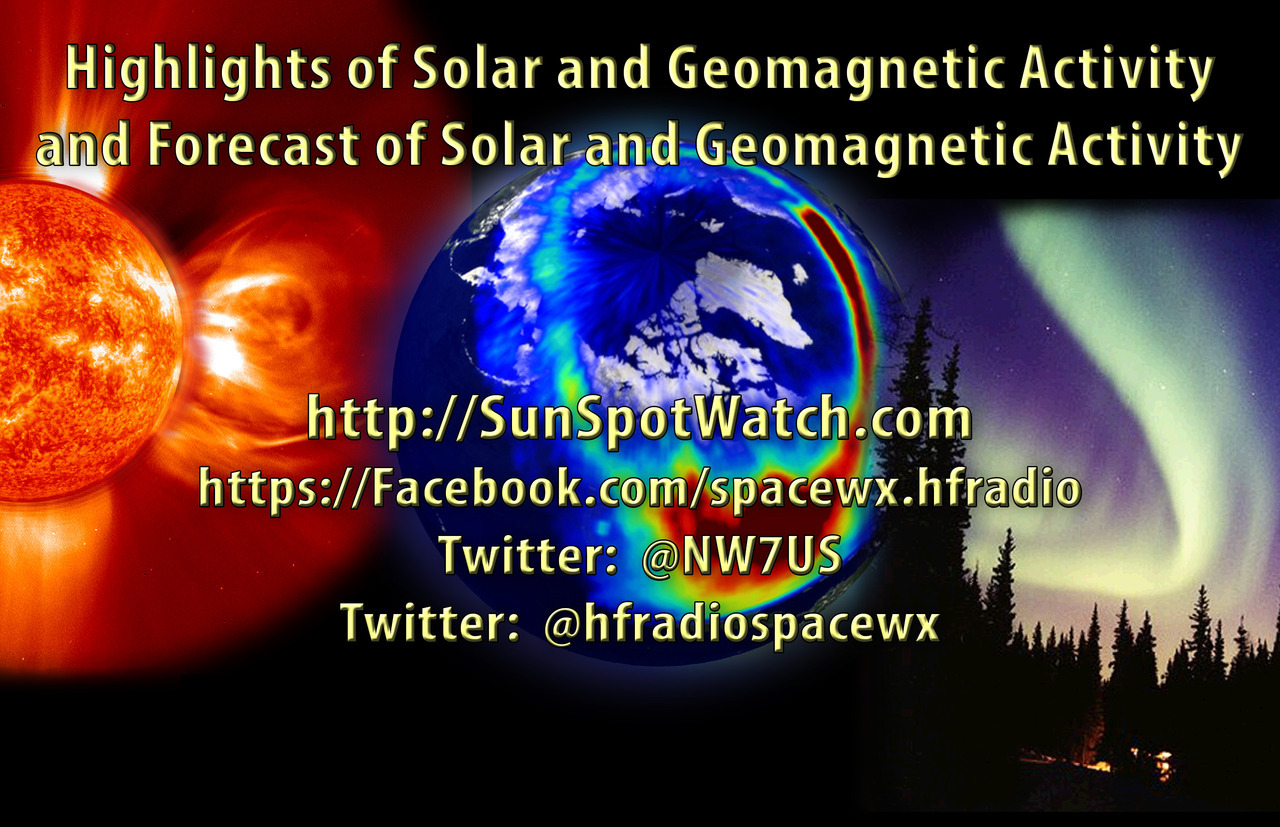 Radio Direction Finding using KerberosSDR
Radio Direction Finding using KerberosSDR
 Traditionally we’ve seen radio direction finding (RDF) in the form of Doppler kits and tone meters, however with the proliferation Software Defined Radio (SDR) we’re seeing a new form of direction finding.
Traditionally we’ve seen radio direction finding (RDF) in the form of Doppler kits and tone meters, however with the proliferation Software Defined Radio (SDR) we’re seeing a new form of direction finding.
Essentially if you take four software defined radios and coherently link them together, you can then compare the signals from four separate antennas to get a bearing of your target signal’s location.
I recently came across a project on Indigogo which offered this in a complete package called the KerberosSDR. Here is a video of my setup and a demonstration of this radio.
The KerberosSDR is still under development, but from my tests it works fairly well. Unfortunately, I don’t have any traditional RDF gear to compare it to but from what I’ve seen it’s certainly a potential way to go if you’re looking to have some fun with RDF and want some more modern gear.
If you’re interested in the KerberosSDR, you can find more information about it here:
https://indiegogo.com/projects/kerberossdr-4x-coherent-rtl-sdr
Harold Giddings, KRØSIV, is a special contributor to AmateurRadio.com. He is a Ruby programmer and maintains the website Signals Everywhere. Contact him at [email protected].
 LHS Episode #280: 1.21 Millimeters
LHS Episode #280: 1.21 Millimeters

Welcome to the 280th installment of Linux in the Ham Shack! In this episode, the hosts discuss a wide variety of topics including AMSAT, encoded amateur radio transmissions, SSSUUUHF records, a new version of VIM, JS8Call, TWCW, FSQ and a whole lot more. Thank you for listening. We hope you enjoy the show.
73 de The LHS Crew
Russ Woodman, K5TUX, co-hosts the Linux in the Ham Shack podcast which is available for download in both MP3 and OGG audio format. Contact him at [email protected].
 Weekly Propagation Summary – 2019 Apr 08 16:10 UTC
Weekly Propagation Summary – 2019 Apr 08 16:10 UTC
Here is this week’s space weather and geophysical report, issued 2019 Apr 08 1120 UTC.
Highlights of Solar and Geomagnetic Activity 01 – 07 April 2019
Solar activity was very low throughout the period. Region 2737 (N12, L=63, class/area-Cao/40 on 02 Apr) was inactive before decaying to plage on 04 April. Region 2738 (N06, L=298, class/area-Hsx/300 on 07 Apr) produced low level B-class activity after rotating around the east limb. No Earth-directed coronal mass ejections (CMEs) were observed.
No proton events were observed at geosynchronous orbit.
The greater than 2 MeV electron flux at geosynchronous orbit reached high levels on 05-07 April with moderate levels observed throughout the remainder of the reporting period.
Geomagnetic field activity reached active levels on 01 and 03 April with unsettled levels on 02, 04-06 April due to coronal hole high-speed stream (CH HSS) influence. Quiet conditions were observed on 07 April.
Forecast of Solar and Geomagnetic Activity 08 April – 04 May 2019
Solar activity is expected to be at very low to low levels throughout the outlook period.
No proton events are expected at geosynchronous orbit.
The greater than 2 MeV electron flux at geosynchronous orbit is expected to reach high levels on 08-12 April and 02-04 May with normal to moderate levels expected throughout the remainder of the outlook period.
Geomagnetic field activity is expected to reach unsettled levels on 24-25, 27-28, 30 April and 01-02 May. Quiet conditions are expected throughout the remainder of the outlook period.
Don’t forget to visit our live space weather and radio propagation web site, at: http://SunSpotWatch.com/
Live Aurora mapping is at http://aurora.sunspotwatch.com/
If you are on Twitter, please follow these two users: 1. https://Twitter.com/NW7US 2. https://Twitter.com/hfradiospacewx
– – – – – – – – – – – – –
Be sure to subscribe to our space weather and propagation email group, on Groups.io
https://groups.io/g/propagation-and-space-weather
Spread the word!
– – – – – – – – – – – – –
Links of interest:
+ Amazon space weather books: http://g.nw7us.us/fbssw-aSWSC
+ https://Twitter.com/NW7US
+ https://Twitter.com/hfradiospacewx
Space Weather and Ham Radio YouTube Channel News:
I am working on launching a YouTube channel overhaul, that includes series of videos about space weather, radio signal propagation, and more.
Additionally, I am working on improving the educational efforts via the email, Facebook, YouTube, Tumblr, and other activities.
You can help!
Please consider becoming a Patron of these space weather and radio communications services, beginning with the YouTube channel:
https://www.patreon.com/NW7US
The YouTube channel:
https://YouTube.com/NW7US
..
Visit, subscribe: NW7US Radio Communications and Propagation YouTube Channel
 My End-Fed Half-Wave (EFHW)
My End-Fed Half-Wave (EFHW)
 The last few years have seen a resurgence of interest in the end fed half-wave wire EFHW antenna. A half-wave at the lowest band of interest will also work well on all harmonically-related bands which has become particularly attractive to those wanting a quick portable wire antenna.
The last few years have seen a resurgence of interest in the end fed half-wave wire EFHW antenna. A half-wave at the lowest band of interest will also work well on all harmonically-related bands which has become particularly attractive to those wanting a quick portable wire antenna.It looked like an interesting antenna to try, as I was in need of a good 80m radiator and following several days of fine summer-like weather, I was able to get my new 80 / 40m wire vertical completed ... a half-wave on 80 and a full-wave on 40m. It’s built as an inverted-L, going up 80’ and the remaining 50’ being horizontal at the same height. It’s fed at the base through an impedance matching transformer and was pruned for the CW end of the band.
There's always a great sense of anticipation when first testing a new antenna and the experience only comes around once in a rare while ... it always brings back memories of my teenaged ham years, quickly scrambling off of my parent's steep three-story roof and tuning-up the DX-20 to see if the latest antenna was going to be something special. Yesterday was similar, except for the roof-top scrambling and the old DX-20.
By mid-afternoon everything was wired up ... but before waterproofing all the connections against the west coast rains, I went to the shack and warmed-up the FT-1000mp, setting it for exactly 10W out. Tuning across 40m, I immediately heard fellow NRR’r Howie, WB2AWQ down in Reno, calling CQ on 40m with one of his military transmitters. He came back immediately and we had a short chat, so at least I knew the new antenna worked!

Having waterproofed all of the connections, I ventured to the shack once more, now just 45 minutes before sunset. I’ve always found that a quick way to gauge relative antenna performance is listening for my low-power signal via the vast KIWI online SDR network.
With the power still set at 10W on 40m I listened on several east coast SDRs, from NH, PA, MD, NY, VA and immediately heard a surprisingly good signals on all of them. Even at 5 W, the signal was copyable. Several of them produced an audible copy when I reduced power to just 1W.
I then tried two SDRs in Brazil and immediately heard the 10W signal again! How about KH6 ... still late afternoon out there? Yes, easy copy in Hawaii as well.
Dare I push my luck and try one more ... one of the SDRs in Iceland?
I almost fell out of the chair when the 10W signal was good copy there as well ... still 15 minutes until sunset and with bright sky outside the shack window.
 One last thing to try was 80m although it was still very early here for 80 ... the SDR in MD returned a nice copy at 10W to complete my quick round of pre-sunset testing.
One last thing to try was 80m although it was still very early here for 80 ... the SDR in MD returned a nice copy at 10W to complete my quick round of pre-sunset testing. From these early observations it would appear that the new antenna is working well but I had yet to do any A-B comparisons with my benchmark best performer, a 40m half-sloper which will be hard to beat.
The 40m half-sloper has always outperformed any other antennas that I have tried. It's the same one that I completed my Tuna Tin 40m W.A.S. on, so its been well tested.
The following evening, I had a chance to A-B test the new antenna, listening on the Kiwi network once again with my power set at 10W.
N8DTT/6 (California) EFW 1S unit better
NO2CW (Florida) EFW slightly better
Jersey Shores, NJ EFW slightly better
TF1VHF (Iceland) EFW slightly better
ND7M (Nevada) equal with slight edge to EFW
KA7EZO (Utah) equal
RTM (Dominican Republic) sloper ~ 1/2 S unit better
KP4CA (Puerto Rico) equal
Paraguay equal
PY2GN (Brazil) EFW ~ 1/2 S unit better
AI6VN/KH6 (Hawaii) equal
VE7HUN (BC) equal (groundwave)
Unlike 1/4 wave verticals that require a fairly robust counterpoise / radial system for effective operation, the counterpoise requirements for a half-wave are far less-demanding. Mine consists of about fifteen short turf-pinned radials and the first 50' of the coaxial feedline's shield. A common mode choke (CMC) is installed on the feeder at the 50' point, keeping any RF out of the shack and the rest of the feedline from radiating.
I was actually pretty surprised at these results but how they will relate to everyday operating is yet to be determined. My main goal was to get a good-performing 80m antenna and anything that works well on 40 would be a nice side benefit but not really required. Unfortunately I don't have another 80m antenna to run some A-B checks with but from what I can tell, performance on 80m seems to be good.
If you are on Facebook, there is a lot of good discussion and information available on the End Fed Half Wave Antennas group.
Steve McDonald, VE7SL, is a regular contributor to AmateurRadio.com and writes from British Columbia, Canada. Contact him at [email protected].
 LHS Episode #279: Ham Radio Deluxe Deep Dive
LHS Episode #279: Ham Radio Deluxe Deep Dive

Hello and welcome to Episode 279 of Linux in the Ham Shack! In this episode, the hosts take a deep dive into the wonderful world of Ham Radio Deluxe, the self-proclaimed radio amateur's best asset, among other things. It's an application that puts all of amateur radio on the palm of your hand. From logging to ego stroking, there's nothing it can't do. And it does it all with flair. Thanks for listening and we hope you have a great week.
73 de The LHS Crew
Russ Woodman, K5TUX, co-hosts the Linux in the Ham Shack podcast which is available for download in both MP3 and OGG audio format. Contact him at [email protected].
 Weekly Propagation Summary – 2019 Apr 01 16:10 UTC
Weekly Propagation Summary – 2019 Apr 01 16:10 UTC
Here is this week’s space weather and geophysical report, issued 2019 Apr 01 0125 UTC.
Highlights of Solar and Geomagnetic Activity 25 – 31 March 2019
Solar activity was very low throughout the period. Region 2736 (N08, L=284, class/area-Eki/420 on 22 Mar) produced low level B-class flare activity after its rotation around the west limb. Region 2737 (N12, L=059, class/area-Bxo/10 on 31 Mar) emerged on the disk but was inactive. No Earth-directed coronal mass ejections (CME) were observed.
No proton events were observed at geosynchronous orbit.
The greater than 2 MeV electron flux at geosynchronous orbit was at moderate levels throughout the reporting period.
Geomagnetic field activity reached active levels on 31 March and unsettled levels on 26-28 March due to influence from multiple, negative polarity coronal hole high-speed streams (CH HSS). Quiet conditions were observed on 25, 29-30 March.
Forecast of Solar and Geomagnetic Activity 01 April – 27 April 2019
Solar activity is expected to be very low on 01-05 and 20-27 April. Low levels are expected between 06-19 April due to the return of Region 2736.
No proton events are expected at geosynchronous orbit.
The greater than 2 MeV electron flux at geosynchronous orbit is expected to reach high levels on 01-07 April with normal to moderate levels expected throughout the remainder of the outlook period.
Geomagnetic field activity is expected to reach active levels on 12 April due to influence from a recurrent, negative-polarity CH HSS. Quiet to unsettled levels are expected throughout the remainder of the outlook period.
Don’t forget to visit our live space weather and radio propagation web site, at: http://SunSpotWatch.com/
Live Aurora mapping is at http://aurora.sunspotwatch.com/
If you are on Twitter, please follow these two users: 1. https://Twitter.com/NW7US 2. https://Twitter.com/hfradiospacewx
– – – – – – – – – – – – –
Be sure to subscribe to our space weather and propagation email group, on Groups.io
https://groups.io/g/propagation-and-space-weather
Spread the word!
– – – – – – – – – – – – –
Links of interest:
+ Amazon space weather books: http://g.nw7us.us/fbssw-aSWSC
+ https://Twitter.com/NW7US
+ https://Twitter.com/hfradiospacewx
Space Weather and Ham Radio YouTube Channel News:
I am working on launching a YouTube channel overhaul, that includes series of videos about space weather, radio signal propagation, and more.
Additionally, I am working on improving the educational efforts via the email, Facebook, YouTube, Tumblr, and other activities.
You can help!
Please consider becoming a Patron of these space weather and radio communications services, beginning with the YouTube channel:
https://www.patreon.com/NW7US
The YouTube channel:
https://YouTube.com/NW7US
..
Visit, subscribe: NW7US Radio Communications and Propagation YouTube Channel
 Radio Club Petitions FCC To Fix Call Area Confusion
Radio Club Petitions FCC To Fix Call Area Confusion
 In its petition, the Sundance Mountain Radio Association asserts that there is unnecessary and harmful confusion caused to daily amateur radio operation because the radio callsign is not a reliable indicator of station location. “It is common to work a W9 station and find out the guy actually moved to Florida years ago,” said Leroy Walker (KVØCO), President of the Sundance Mountain Radio Association (Palmer Lake, CO). “This wastes precious time when I am trying to work a particular state or area of the country. The other day, a KL7 station came booming in on 160m and I thought I had a new DXCC entity. Turns out, he was in Nebraska.”
In its petition, the Sundance Mountain Radio Association asserts that there is unnecessary and harmful confusion caused to daily amateur radio operation because the radio callsign is not a reliable indicator of station location. “It is common to work a W9 station and find out the guy actually moved to Florida years ago,” said Leroy Walker (KVØCO), President of the Sundance Mountain Radio Association (Palmer Lake, CO). “This wastes precious time when I am trying to work a particular state or area of the country. The other day, a KL7 station came booming in on 160m and I thought I had a new DXCC entity. Turns out, he was in Nebraska.”License Modification
Filed as #satire #humor #fakenews
The post Radio Club Petitions FCC To Fix Call Area Confusion appeared first on The KØNR Radio Site.
Bob Witte, KØNR, is a regular contributor to AmateurRadio.com and writes from Colorado, USA. Contact him at [email protected].















